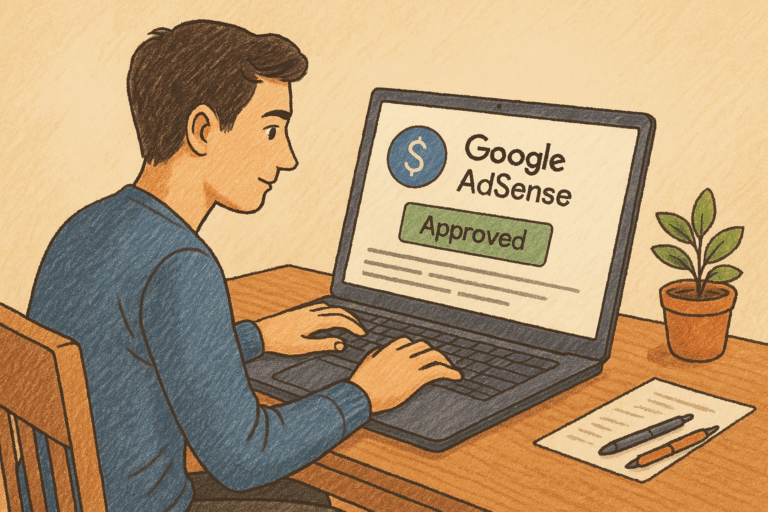Smart Tools for Smart Creators ✅
Starting a blog can feel like standing at the edge of a huge ocean. You know the potential is enormous, but it’s easy to get lost, unsure where to start, or overwhelmed by so many conflicting tips online. The truth is, most beginner blogs fail not because people lack ideas or skills, but because they skip the most important step: planning strategically for traffic.
A blog that grows steadily and attracts readers doesn’t happen by chance. It requires thoughtful planning, a clear structure, and actionable steps to turn your ideas into posts that get discovered, read, and shared. In this guide, we’ll break down the process of planning a blog that actually gets traffic, step by step, in a way any beginner can implement.
1. Understanding Your Blog’s Purpose
Before you write a single post, take a moment to define why you are blogging. Clarity here will guide every decision you make moving forward. Ask yourself:
- Why am I blogging? Are you sharing knowledge, building a personal brand, or aiming to create an income stream? Knowing your primary goal shapes the content you produce and the tone you use.
- Who is your audience? Think about the people you want to reach. What are their interests, age group, challenges, and aspirations? A blog for college students learning coding looks very different from one for freelancers looking to grow their business.
- What problem am I solving? Every successful blog post addresses a specific problem or need. Whether it’s guiding readers, entertaining them, or helping them make decisions, clarity here ensures your content is valuable.
For example, a blog about digital productivity might have a purpose like: “Helping busy professionals organize their work efficiently and get more done in less time.” With this clear purpose, every post can support that mission.
2. Choosing Your Niche Carefully
Selecting the right niche is one of the most critical steps. A niche is your blog’s main topic area, and it should be something that balances interest, knowledge, and audience demand.
- Pick something you’re knowledgeable about: Passion alone is not enough. Writing consistently requires a base of experience or research.
- Research audience demand: Tools like Google Trends, AnswerThePublic, and keyword research tools can help you see what people are actually searching for.
- Avoid overly broad niches: General topics like “lifestyle” or “technology” are competitive. Narrowing down helps your blog rank faster and attract the right audience.
For instance, instead of a broad “food blog,” you could niche down to “quick and healthy meals for busy professionals.” That specificity makes your blog stand out and makes it easier to plan content.
3. Establishing Content Pillars
Once you have a niche, define content pillars. These are the main themes that your blog will consistently cover. Think of pillars as the foundation for your entire content strategy.
- Each pillar should represent a topic your audience cares about.
- Every post you write should relate to one of these pillars.
- Pillars allow you to organize your posts, interlink content, and help search engines understand the structure of your site.
Example: For a productivity blog, your pillars could be:
- Time Management Tips – Techniques like batching, prioritization, and the Pomodoro method.
- Tool Reviews – Reviews of apps like Notion, Trello, or Google Calendar.
- Daily Routines & Habits – Morning routines, evening wind-downs, focus exercises.
Mapping content this way makes your blog organized and ensures that every new post strengthens your blog’s overall authority.
4. Planning a Content Calendar
A content calendar is the lifeline of a blog that grows. Posting randomly leads to inconsistent traffic and disengaged readers.
- Decide posting frequency: Start small — 1–2 posts per week — and scale as you get comfortable.
- Plan around themes: Coordinate posts with seasonal trends, holidays, or industry events.
- Balance content types: Mix tutorials, listicles, opinion pieces, and case studies. Variety keeps readers engaged.
Tip: Use tools like Trello, Notion, or even a simple Google Sheet to plan your calendar. Include:
- Post title
- Target pillar
- Keywords
- Publish date
This system saves you time, prevents last-minute scrambling, and ensures you never run out of ideas.
5. Researching Keywords Before Writing
Keyword research is often misunderstood. It’s not about stuffing keywords into your post—it’s about understanding what people are searching for and creating content that meets that demand.
- Use tools like Ubersuggest, SEMrush, or Rank Math to find long-tail keywords. These are specific phrases that have decent search volume but lower competition, making it easier to rank.
- Identify primary and secondary keywords for each post. Primary goes in your title, H2 headings, and meta description; secondary can be sprinkled naturally in the content.
- Look at the questions people ask in forums, Quora, or Reddit — this can spark blog post ideas and help you answer your audience directly.
Example: Instead of targeting “productivity tips,” a long-tail keyword could be “productivity tips for remote workers with small kids.” Targeting specifics often brings more engaged traffic.
6. Structuring Each Post
A well-structured post is readable, scannable, and SEO-friendly.
Step-by-step structure:
- Introduction: Hook the reader with a problem, question, or story. Make it clear what they’ll gain by reading.
- Body: Break the content into H2 and H3 headings. Use bullet points, numbered lists, and short paragraphs for easy reading.
- Examples & Case Studies: Include real-life examples, screenshots, or sample workflows to make your advice tangible.
- Conclusion / Next Steps: Instead of a “Final Thoughts” section, naturally guide readers toward action — like subscribing, checking another post, or trying a tip.
Tip: Always imagine a reader skimming the post. Headers should be descriptive so they understand the content even if they don’t read every word.
7. Optimizing for SEO and Readability
Even the best-written post won’t reach readers if it’s not optimized.
- Keep paragraphs short (2–4 lines).
- Use headings strategically (H2 for main sections, H3 for subpoints).
- Add internal links to related posts to keep readers engaged and improve SEO.
- Include images with descriptive alt text.
- Compress images for faster load times.
- Write a meta description that clearly states the benefit of your post.
Tip: Read your post aloud. If it sounds awkward, it likely reads awkwardly. Smooth, conversational flow keeps readers and search engines happy.
8. Promoting Your Blog for Traffic
Writing alone isn’t enough — you need a promotion strategy.
- Social Media: Share posts on relevant platforms — Instagram, LinkedIn, Twitter, or Facebook depending on your audience.
- Communities: Engage in forums, Facebook groups, and Reddit communities without spamming. Provide value and link naturally.
- Email Newsletters: Even a small list can be a reliable traffic source. Send updates or summaries of your posts weekly or monthly.
- Repurposing Content: Turn your posts into slides, infographics, short videos, or carousels for social media. Repurposing extends reach and reinforces your message.
9. Tracking Performance and Adjusting
Your blog plan isn’t complete without measurement.
- Use Google Analytics to see which posts attract traffic.
- Monitor bounce rate, time on page, and scroll depth to understand engagement.
- Update older posts with new insights, keywords, or formatting improvements.
- Experiment with headlines, images, and internal linking to see what drives more traffic.
Regular review ensures your blog keeps growing rather than stagnating.
10. Tools That Make Planning Easier
A few essential tools can save you hours and improve results:
- Content Planning: Trello, Notion, Google Sheets
- Keyword Research: Ubersuggest, SEMrush, Rank Math
- Writing & Editing: Grammarly, Hemingway App
- Graphics & Design: Canva, Figma
- SEO Optimization: Yoast SEO, Rank Math
- Analytics: Google Analytics, Google Search Console
Investing in these tools early helps you maintain quality and consistency without burning out.
Putting It All Together
Planning a blog that actually gets traffic isn’t about luck. It’s about taking the right steps in order:
- Clarify your blog’s purpose.
- Choose a niche wisely.
- Define content pillars.
- Build a content calendar.
- Research keywords.
- Structure posts effectively.
- Optimize for SEO and readability.
- Promote strategically.
- Track performance and iterate.
- Use the right tools to stay efficient.
Following this system sets up your blog for long-term growth. It’s the same approach professional bloggers use to build traffic, authority, and income—except here, it’s broken down so any beginner can start today and see results in months.
Smart Ideas, Straight to You
Subscribe for free updates — posts, tools, and strategies to help you create smarter and grow faster.






